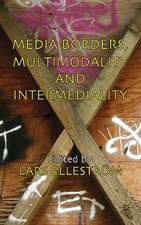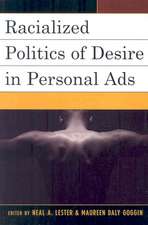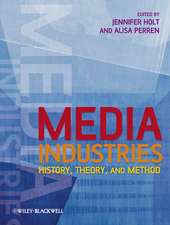Double Fold: Libraries and the Assault on Paper
Autor Nicholson Bakeren Limba Engleză Paperback – 31 mar 2002
Vezi toate premiile Carte premiată
With meticulous detective work and Baker’s well-known explanatory power, Double Fold reveals a secret history of microfilm lobbyists, former CIA agents, and warehouses where priceless archives are destroyed with a machine called a guillotine. Baker argues passionately for preservation, even cashing in his own retirement account to save one important archive–all twenty tons of it. Written the brilliant narrative style that Nicholson Baker fans have come to expect, Double Fold is a persuasive and often devastating book that may turn out to be The Jungle of the American library system.
Preț: 147.65 lei
Nou
Puncte Express: 221
Preț estimativ în valută:
28.25€ • 30.21$ • 23.56£
28.25€ • 30.21$ • 23.56£
Carte disponibilă
Livrare economică 27 martie-10 aprilie
Preluare comenzi: 021 569.72.76
Specificații
ISBN-13: 9780375726217
ISBN-10: 0375726217
Pagini: 384
Ilustrații: 4 PP COLOR ILLUSTRATIONS
Dimensiuni: 134 x 205 x 21 mm
Greutate: 0.35 kg
Editura: Vintage Publishing
ISBN-10: 0375726217
Pagini: 384
Ilustrații: 4 PP COLOR ILLUSTRATIONS
Dimensiuni: 134 x 205 x 21 mm
Greutate: 0.35 kg
Editura: Vintage Publishing
Notă biografică
Nicholson Baker has published five novels–The Mezzanine, Room Temperature, Vox, The Fermata, and The Everlasting Story of Nory–and two works of nonfiction, U and I and The Size of Thoughts. He lives with his wife and two children in Maine.
Extras
Overseas Disposal
The British Library's newspaper collection occupies several buildings in Colindale, north of London, near a former Royal Air Force base that is now a museum of aviation. On October 20, 1940, a German airplane — possibly mistaking the library complex for an aircraft-manufacturing plant — dropped a bomb on it. Ten thousand volumes of Irish and English papers were destroyed; fifteen thousand more were damaged. Unscathed, however, was a very large foreign-newspaper collection, including many American titles: thousands of fifteen-pound brick-thick folios bound in marbled boards, their pages stamped in red with the British Museum's crown-and-lion symbol of curatorial responsibility.
Bombs spared the American papers, but recent managerial policy has not — most were sold off in a blind auction in the fall of 1999. One of the library's treasures was a seventy-year run, in about eight hundred volumes, of Joseph Pulitzer's exuberantly polychromatic newspaper, the New York World. Pulitzer discovered that illustrations sold the news; in the 1890s, he began printing four-color Sunday supplements and splash-panel cartoons. The more maps, murder-scene diagrams, ultra-wide front-page political cartoons, fashion sketches, needlepoint patterns, children's puzzles, and comics that Pulitzer published, the higher the World's sales climbed; by the mid-nineties, its circulation was the largest of any paper in the country. William Randolph Hearst moved to New York in 1895 and copied Pulitzer's innovations and poached his staff, and the war between the two men created modern privacy-probing, muckraking, glamour-smitten journalism. A million people a day once read Pulitzer's World; now an original set is a good deal rarer than a Shakespeare First Folio or the Gutenberg Bible.
Besides the World, the British Library also possessed one of the last sweeping runs of the sumptuous Chicago Tribune — about 1,300 volumes, reaching from 1888 to 1958, complete with bonus four-color art supplements on heavy stock from the 1890s ("This Paper is Not Complete Without the Color Illustration" says the box on the masthead); extravagant layouts of illustrated fiction; elaborately hand-lettered ornamental headlines; and decades of page-one political cartoons by John T. McCutcheon. The British Library owned, as well, an enormous set of the San Francisco Chronicle (one of perhaps two that are left, the second owned by the Chronicle Publishing Company itself and inaccessible to scholars), which in its heyday was filled with gorgeously drippy art-nouveau graphics. And the library owned a monster accumulation of what one could argue is the best newspaper in U.S. history, the New York Herald Tribune, along with its two tributaries, Horace Greeley's anti-slavery Tribune and James Gordon Bennett's initially pro-slavery Herald. The Herald Tribune set carries all the way through to 1966, when the paper itself died — it, too, may be the last surviving long run anywhere. And there was a goodly stretch of The New York Times on the British Library's shelves (1915 through 1958), with Al Hirschfeld drawings and hundreds of luminously fine-grained, sepia-tinted "Rotogravure Picture Sections" bound in place.
All these newspapers have been very well cared for over the years — the volumes I was allowed to examine in September 1999 were in lovely shape. The pictorial sections, but for their unfamiliar turn-of-the-century artwork, looked and felt as if they had peeled off a Hoe cylinder press day before yesterday.
But then, wood-pulp newspapers of fifty and a hundred years ago are, contrary to incessant library propaganda, often surprisingly well preserved. Everyone knows that newsprint, if left in the sun, quickly turns yellow and brittle (a connective wood ingredient called lignin, which newsprint contains in abundance, reacts with sunlight), but rolls of microfilm — and floppies and DVDs — don't do well in the sun, either; so far, many of the old volumes seem to be doing a better job of holding their original images than the miniature plastic reproductions of them that libraries have seen fit to put in their places over the years. Binding is very important. The stitching together of fifteen (or thirty or sixty) single issues of a paper into one large, heavy book does much to keep the sheets sound; the margins often become brown and flaky, since moist, warm air reacts with the acidic compounds in the paper and weakens it, and the binding glues can stop working; but a little deeper inside the flatland of the tightly closed folio, the sheer weight of the text-block squeezes out most of the air. The effect is roughly equivalent to vacuum-sealing the inner expanses of the pages: the paper suffers much less impairment as a result.
Many librarians, however, have managed to convince themselves, and us, that if a newspaper was printed after 1870 or so, it will inevitably self-destruct or "turn to dust" any minute, soon, in a matter of a few years — 1870 being the all-important date after which, in American newsprint mills, papermaking pulps consisting of cooked rags gradually began to give way to pulps made of stone-ground wood. But "soon" is a meaningless word in the context of a substance with a life as long as that of the printed page — indeed, it is a word that allows for all sorts of abuses. Early on, fledgling microfilm companies fed the fear of impermanence with confident mispredictions. Charles Z. Case, an executive at Recordak, Kodak's microfilm subsidiary, wrote in 1936: "Since the adoption of wood-sulphite paper for newspaper printing, a newspaper file has had a life of from 5 to 40 years depending on the quality of the paper, the conditions of storage, and the degree of use." Had Case's forecast held true, the volume of the Chicago Tribune for July 1911 that lies open before me as I type (to an influenza-inspired illustrated section on "A New Theory of Baby Rearing") would have expired at least half a century ago. Thomas Martin, chief of the manuscript division of the Library of Congress in the thirties, agreed with the Recordak salesman: "Old wood-pulp files which have only a few years' duration remaining in them should be photographed on film as soon as satisfactory results can be obtained. In such cases we really have no choice but to make or take film copies, the original will soon crumble into dust."
But the originals didn't crumble into dust. Keyes Metcalf, a microfilm pioneer and the director of the libraries at Harvard, in 1941 predicted that the "total space requirements" of research libraries "will be reduced by paper disintegration." Then five, ten, twenty years went by, and the paper — even the supposedly ephemeral newsprint — was still there. So librarians began getting rid of it anyway. If you destroy the physical evidence, nobody will know how skewed your predictions were.
Vilified though it may be, ground-wood pulp is one of the great inventions of the late nineteenth century: it gave us cheap paper, and cheap paper transformed the news. "All that it is necessary for a man to do on going into a paper-mill is to take off his shirt, hand it to the devil who officiates at one extremity, and have it come out 'Robinson Crusoe' at the other," wrote the founder of the New York Sun in 1837. But there were never enough shirts, and in 1854 rag shortages lifted the price of newsprint to alarming heights. The arrival of the brothers Pagenstecher, who in the eighteen-sixties imported a German machine that shredded logs to pulp by jamming their ends against a circular, water-cooled grinding stone, brought prices way down — from twelve cents a pound in 1870, to seven cents a pound in 1880, to less than two cents a pound in 1900. The drop gave Pulitzer and Hearst the plentiful page space to sell big ads, and allowed their creations to flower into the gaudy painted ladies they had become by the first decade of the twentieth century.
There's no question that wood pulps are in general weaker than rag pulps; and old newsprint, especially, tears easily, and it can become exceedingly fragile if it is stored, say, on the cement floor of a library basement, near heating pipes, for a few decades. But the degree of fragility varies from title to title and run to run, and many fragile things (old quilts, old clocks, astrolabes, dried botanical specimens, Egyptian glass, daguerreotypes, early computers) are deemed worth preserving despite, or even because of, their fragility. The most delicate volume I've come across (a month of the Detroit Evening News from 1892), though the pages were mostly detached, and though it shed flurries of marginal flakes when I moved it around, could nonetheless be page-turned and read with a modicum of care — there was an interesting article, with two accompanying etchings, about a city shelter for "homeless wanderers." (Sinners slept on wooden bunks without bedding, while the newly converted got cots with mattresses, and a reading room.)
Old newsprint is very acidic — and so? Our agitation over the acid in paper is not rational. Just because a given page has a low pH (a pH of 7 is neutral, below that is acidic) doesn't mean that it can't be read. There are five-hundred-year-old book papers that remain strong and flexible despite pH levels under five, a fact which has led one conservation scientist to conclude that "the acidity of the paper alone is not necessarily indicative of the state of permanence of paper." It is difficult, in fact, to get a meaningful measure of how alkaline or acidic a paper actually is, since chemicals on the surface behave differently than those held within; the standard scientific tests (which often rely on a blender) don't discriminate. It's true that, all things being equal, pH-neutral paper seems to keep its properties longer than paper that is made with acid-containing or acid-forming additives; scientists have been making this observation, on and off, for more than eighty years. But saying that one substance is stronger than another is not the same as saying that the weaker substance is on the verge of self-destruction. A stainless-steel chair may be more durable than a wooden one, but the wooden one isn't necessarily going to collapse the next time you take a seat.
Can't scientists foretell with a fair degree of certainty how long a newspaper collection of a given age will last? No, they can't; there has never been a long-term study that attempted to plot an actual loss-of-strength curve for samples of naturally aging newsprint, or indeed for samples of any paper. Years ago, William K. Wilson, a paper scientist, began such a study at the National Bureau of Standards. For three decades he recorded the degradative changes undergone by a set of commercial book papers; then somebody decided to clean out the green filing cabinet in which the papers were stored — end of experiment. "That raised my blood pressure a little," Wilson told me.
In the absence of real long-term data, predictions have relied on methodologically shaky "artificial aging" (or "accelerated aging") experiments, in which you bake a paper sample in a laboratory oven for a week or two and then belabor it with standardized tests. With your test results in hand, you can, by applying a bit of chemist's legerdemain called the Arrhenius equation, come up with what appears be a reasonable estimate of the number of years the sample will last at shirtsleeve temperatures. But the results of these sorts of divinatory calculations, invoked with head-shaking gravity by library administrators, have been uniformly wrong, and they are now viewed with skepticism by many paper scientists. The authors of the ASTM Standards, for example, write that the use of the Arrhenius equation to predict the life expectancy of paper is "an interesting academic exercise, but the uncertainty of extrapolation is too great for this approach to be taken very seriously"; William Wilson points out that you can't predict how long an egg will last in the carton by putting it in boiling water for five minutes. Paper has a complex and as yet ill-charted chemistry, with many different molecular and mechanical processes under way concurrently; one Swedish researcher wrote that it is a "naive hope" to think that we can estimate "the life length of books by means of accelerated aging tests and [the] Arrhenius approach."
In a way, however, all surviving newspaper collections, in and out of libraries, are taking part in an immense self-guided experiment in natural aging — an experiment that confutes the doctrine of newsprint's imminent disintegration. Peter Waters, former head of the conservation lab at the Library of Congress, told me that he sees no reason why old ground-wood pulp paper can't hold its textual freight for "a hell of a long time" if it is properly stored. He notes that most of the cellulose-sundering chemical reactions that can happen to a book or newspaper volume seem to take place in the first decade or so of its life; fifty years of handling paper (Waters is a master bookbinder) have taught him that the rate at which paper loses strength decreases significantly over time — the curve of observed decay levels out. There is a very good chance, then, that a volume of the New York World that is doing okay at age ninety will be in pretty much the same shape when it is a hundred and eighty, assuming someone is willing to take decent care of it.
The British Library's papers had escaped the Blitz and the agenbite of their own acidity, but their keepers craved the space they occupied. English law requires that the library preserve British newspapers in the original but makes no such stipulation for foreign papers, and in 1996 the library quietly announced its intent to rid itself of about sixty thousand volumes — almost all the non-Commonwealth papers printed after 1850 for which they had bought microfilm copies. (The microfilm, much of it shot in the United States decades ago, is of varying quality — some good, some not good, all on high-contrast black-and-white stock, which wasn't designed to reproduce the intermediate shades of photographs.) The announcement appeared as an inside article in the newspaper library's newsletter; it was written up not long after as a short wire-service story — "British Library Giving Away Historic Newspapers."
In 1997 the library selected for discard more than seventy-five runs of Western European papers and periodicals, from France, Belgium, Germany, Austria, Greece, Italy, Portugal, Spain, the Netherlands, and Switzerland. They were able to place a number of these titles with national and university libraries; others they planned to sell or throw away. (I first found out about these developments in 1999; library officials still have not provided an accounting of where everything went.) Baylor University in Texas asked for, and got, eight runs of important French and Italian papers from the 1850s on, some of which will become part of their renowned Armstrong Browning collection, since Robert and Elizabeth Barrett Browning likely would have read those papers in their expatriate years.
Very few people knew any of this was going on. Although I interviewed a number of American newspaper librarians and dealers, I heard nothing of it; and even well-connected heads of libraries within England — such as David McKitterick, librarian of Trinity College, Cambridge, who serves on an advisory board of the British Library — were not informed of the "overseas disposals project," and learned of it only late in 1999, when word began to get out. McKitterick objects to the "very quiet way" in which the deaccessioning was handled (at the very least, other British libraries should have had a better-advertised chance at the papers, he says), and he is troubled by what is on the lists; he mentions, for instance, the newspapers of pre-Revolutionary Russia, Nazi Germany, and occupied France. "I've now talked to a number of scholars about this," McKitterick told me, "and they're absolutely furious. When you replace a broadsheet newspaper with microfilm, you effectively kill stone dead much of what it meant at its time. Film can't deal adequately with illustrations — and yet they were discarding the great French illustrated papers of the early twentieth century."
But library administrators had other things to think about than illustration and scholarship. "Increasing pressure on the storage facilities at the Colindale site" was the justification for their desperate act. One of the finest libraries in the world was unable or unwilling to buy, build, retrofit, or lease a ten-thousand-square-foot warehouse anywhere in England that could hold their unique international collection.
With Western Europe taken care of, having freed up thousands of linear meters of shelf space without any political trouble, the British Library then moved on to papers from Eastern Europe, South America, and the U.S.A. They sent out notices of availability to the Library of Congress and the American Antiquarian Society, of Worcester, Massachusetts. The Library of Congress rejected everything, but the American Antiquarian Society, which owns a famous collection of early papers (bound in black with gold trim), took several titles, mainly covering the era of the Civil War and immediately afterward. "The redcoats are coming!" librarians there said, shelving the red-spined British volumes next to their black ones. Richard Bland College in Petersburg, Virginia, claimed several nineteenth-century runs. John Blair, head of the history department, says he would have taken more of the British Library's collection if his college had had more space; Blair remembers working as a stock boy in a large Massachusetts library in the fifties and hauling home dozens of unwanted newspaper volumes. "They just junked them," he said; he has used them for years in his classes. Blair likened the clearing out of newspaper collections to the overeager tearing up of track as the railroads went into decline. "Now maybe they regret losing some of those rights-of-way," he said.
No other libraries expressed interest in the huge remaining mass of U.S. material. The plan, blessed by the British Library's board, was to offer to dealers whatever libraries left unclaimed; anything dealers didn't want was to be thrown away: "Material for which we cannot find a home will be offered to dealers for sale, or as a last resort sent for pulping." Brian Lang, the director of the British Library, reiterated this plan in a letter to me: "The intention is that runs of newspapers for which no bids have been received will be pulped."
The British Library's newspaper collection occupies several buildings in Colindale, north of London, near a former Royal Air Force base that is now a museum of aviation. On October 20, 1940, a German airplane — possibly mistaking the library complex for an aircraft-manufacturing plant — dropped a bomb on it. Ten thousand volumes of Irish and English papers were destroyed; fifteen thousand more were damaged. Unscathed, however, was a very large foreign-newspaper collection, including many American titles: thousands of fifteen-pound brick-thick folios bound in marbled boards, their pages stamped in red with the British Museum's crown-and-lion symbol of curatorial responsibility.
Bombs spared the American papers, but recent managerial policy has not — most were sold off in a blind auction in the fall of 1999. One of the library's treasures was a seventy-year run, in about eight hundred volumes, of Joseph Pulitzer's exuberantly polychromatic newspaper, the New York World. Pulitzer discovered that illustrations sold the news; in the 1890s, he began printing four-color Sunday supplements and splash-panel cartoons. The more maps, murder-scene diagrams, ultra-wide front-page political cartoons, fashion sketches, needlepoint patterns, children's puzzles, and comics that Pulitzer published, the higher the World's sales climbed; by the mid-nineties, its circulation was the largest of any paper in the country. William Randolph Hearst moved to New York in 1895 and copied Pulitzer's innovations and poached his staff, and the war between the two men created modern privacy-probing, muckraking, glamour-smitten journalism. A million people a day once read Pulitzer's World; now an original set is a good deal rarer than a Shakespeare First Folio or the Gutenberg Bible.
Besides the World, the British Library also possessed one of the last sweeping runs of the sumptuous Chicago Tribune — about 1,300 volumes, reaching from 1888 to 1958, complete with bonus four-color art supplements on heavy stock from the 1890s ("This Paper is Not Complete Without the Color Illustration" says the box on the masthead); extravagant layouts of illustrated fiction; elaborately hand-lettered ornamental headlines; and decades of page-one political cartoons by John T. McCutcheon. The British Library owned, as well, an enormous set of the San Francisco Chronicle (one of perhaps two that are left, the second owned by the Chronicle Publishing Company itself and inaccessible to scholars), which in its heyday was filled with gorgeously drippy art-nouveau graphics. And the library owned a monster accumulation of what one could argue is the best newspaper in U.S. history, the New York Herald Tribune, along with its two tributaries, Horace Greeley's anti-slavery Tribune and James Gordon Bennett's initially pro-slavery Herald. The Herald Tribune set carries all the way through to 1966, when the paper itself died — it, too, may be the last surviving long run anywhere. And there was a goodly stretch of The New York Times on the British Library's shelves (1915 through 1958), with Al Hirschfeld drawings and hundreds of luminously fine-grained, sepia-tinted "Rotogravure Picture Sections" bound in place.
All these newspapers have been very well cared for over the years — the volumes I was allowed to examine in September 1999 were in lovely shape. The pictorial sections, but for their unfamiliar turn-of-the-century artwork, looked and felt as if they had peeled off a Hoe cylinder press day before yesterday.
But then, wood-pulp newspapers of fifty and a hundred years ago are, contrary to incessant library propaganda, often surprisingly well preserved. Everyone knows that newsprint, if left in the sun, quickly turns yellow and brittle (a connective wood ingredient called lignin, which newsprint contains in abundance, reacts with sunlight), but rolls of microfilm — and floppies and DVDs — don't do well in the sun, either; so far, many of the old volumes seem to be doing a better job of holding their original images than the miniature plastic reproductions of them that libraries have seen fit to put in their places over the years. Binding is very important. The stitching together of fifteen (or thirty or sixty) single issues of a paper into one large, heavy book does much to keep the sheets sound; the margins often become brown and flaky, since moist, warm air reacts with the acidic compounds in the paper and weakens it, and the binding glues can stop working; but a little deeper inside the flatland of the tightly closed folio, the sheer weight of the text-block squeezes out most of the air. The effect is roughly equivalent to vacuum-sealing the inner expanses of the pages: the paper suffers much less impairment as a result.
Many librarians, however, have managed to convince themselves, and us, that if a newspaper was printed after 1870 or so, it will inevitably self-destruct or "turn to dust" any minute, soon, in a matter of a few years — 1870 being the all-important date after which, in American newsprint mills, papermaking pulps consisting of cooked rags gradually began to give way to pulps made of stone-ground wood. But "soon" is a meaningless word in the context of a substance with a life as long as that of the printed page — indeed, it is a word that allows for all sorts of abuses. Early on, fledgling microfilm companies fed the fear of impermanence with confident mispredictions. Charles Z. Case, an executive at Recordak, Kodak's microfilm subsidiary, wrote in 1936: "Since the adoption of wood-sulphite paper for newspaper printing, a newspaper file has had a life of from 5 to 40 years depending on the quality of the paper, the conditions of storage, and the degree of use." Had Case's forecast held true, the volume of the Chicago Tribune for July 1911 that lies open before me as I type (to an influenza-inspired illustrated section on "A New Theory of Baby Rearing") would have expired at least half a century ago. Thomas Martin, chief of the manuscript division of the Library of Congress in the thirties, agreed with the Recordak salesman: "Old wood-pulp files which have only a few years' duration remaining in them should be photographed on film as soon as satisfactory results can be obtained. In such cases we really have no choice but to make or take film copies, the original will soon crumble into dust."
But the originals didn't crumble into dust. Keyes Metcalf, a microfilm pioneer and the director of the libraries at Harvard, in 1941 predicted that the "total space requirements" of research libraries "will be reduced by paper disintegration." Then five, ten, twenty years went by, and the paper — even the supposedly ephemeral newsprint — was still there. So librarians began getting rid of it anyway. If you destroy the physical evidence, nobody will know how skewed your predictions were.
Vilified though it may be, ground-wood pulp is one of the great inventions of the late nineteenth century: it gave us cheap paper, and cheap paper transformed the news. "All that it is necessary for a man to do on going into a paper-mill is to take off his shirt, hand it to the devil who officiates at one extremity, and have it come out 'Robinson Crusoe' at the other," wrote the founder of the New York Sun in 1837. But there were never enough shirts, and in 1854 rag shortages lifted the price of newsprint to alarming heights. The arrival of the brothers Pagenstecher, who in the eighteen-sixties imported a German machine that shredded logs to pulp by jamming their ends against a circular, water-cooled grinding stone, brought prices way down — from twelve cents a pound in 1870, to seven cents a pound in 1880, to less than two cents a pound in 1900. The drop gave Pulitzer and Hearst the plentiful page space to sell big ads, and allowed their creations to flower into the gaudy painted ladies they had become by the first decade of the twentieth century.
There's no question that wood pulps are in general weaker than rag pulps; and old newsprint, especially, tears easily, and it can become exceedingly fragile if it is stored, say, on the cement floor of a library basement, near heating pipes, for a few decades. But the degree of fragility varies from title to title and run to run, and many fragile things (old quilts, old clocks, astrolabes, dried botanical specimens, Egyptian glass, daguerreotypes, early computers) are deemed worth preserving despite, or even because of, their fragility. The most delicate volume I've come across (a month of the Detroit Evening News from 1892), though the pages were mostly detached, and though it shed flurries of marginal flakes when I moved it around, could nonetheless be page-turned and read with a modicum of care — there was an interesting article, with two accompanying etchings, about a city shelter for "homeless wanderers." (Sinners slept on wooden bunks without bedding, while the newly converted got cots with mattresses, and a reading room.)
Old newsprint is very acidic — and so? Our agitation over the acid in paper is not rational. Just because a given page has a low pH (a pH of 7 is neutral, below that is acidic) doesn't mean that it can't be read. There are five-hundred-year-old book papers that remain strong and flexible despite pH levels under five, a fact which has led one conservation scientist to conclude that "the acidity of the paper alone is not necessarily indicative of the state of permanence of paper." It is difficult, in fact, to get a meaningful measure of how alkaline or acidic a paper actually is, since chemicals on the surface behave differently than those held within; the standard scientific tests (which often rely on a blender) don't discriminate. It's true that, all things being equal, pH-neutral paper seems to keep its properties longer than paper that is made with acid-containing or acid-forming additives; scientists have been making this observation, on and off, for more than eighty years. But saying that one substance is stronger than another is not the same as saying that the weaker substance is on the verge of self-destruction. A stainless-steel chair may be more durable than a wooden one, but the wooden one isn't necessarily going to collapse the next time you take a seat.
Can't scientists foretell with a fair degree of certainty how long a newspaper collection of a given age will last? No, they can't; there has never been a long-term study that attempted to plot an actual loss-of-strength curve for samples of naturally aging newsprint, or indeed for samples of any paper. Years ago, William K. Wilson, a paper scientist, began such a study at the National Bureau of Standards. For three decades he recorded the degradative changes undergone by a set of commercial book papers; then somebody decided to clean out the green filing cabinet in which the papers were stored — end of experiment. "That raised my blood pressure a little," Wilson told me.
In the absence of real long-term data, predictions have relied on methodologically shaky "artificial aging" (or "accelerated aging") experiments, in which you bake a paper sample in a laboratory oven for a week or two and then belabor it with standardized tests. With your test results in hand, you can, by applying a bit of chemist's legerdemain called the Arrhenius equation, come up with what appears be a reasonable estimate of the number of years the sample will last at shirtsleeve temperatures. But the results of these sorts of divinatory calculations, invoked with head-shaking gravity by library administrators, have been uniformly wrong, and they are now viewed with skepticism by many paper scientists. The authors of the ASTM Standards, for example, write that the use of the Arrhenius equation to predict the life expectancy of paper is "an interesting academic exercise, but the uncertainty of extrapolation is too great for this approach to be taken very seriously"; William Wilson points out that you can't predict how long an egg will last in the carton by putting it in boiling water for five minutes. Paper has a complex and as yet ill-charted chemistry, with many different molecular and mechanical processes under way concurrently; one Swedish researcher wrote that it is a "naive hope" to think that we can estimate "the life length of books by means of accelerated aging tests and [the] Arrhenius approach."
In a way, however, all surviving newspaper collections, in and out of libraries, are taking part in an immense self-guided experiment in natural aging — an experiment that confutes the doctrine of newsprint's imminent disintegration. Peter Waters, former head of the conservation lab at the Library of Congress, told me that he sees no reason why old ground-wood pulp paper can't hold its textual freight for "a hell of a long time" if it is properly stored. He notes that most of the cellulose-sundering chemical reactions that can happen to a book or newspaper volume seem to take place in the first decade or so of its life; fifty years of handling paper (Waters is a master bookbinder) have taught him that the rate at which paper loses strength decreases significantly over time — the curve of observed decay levels out. There is a very good chance, then, that a volume of the New York World that is doing okay at age ninety will be in pretty much the same shape when it is a hundred and eighty, assuming someone is willing to take decent care of it.
The British Library's papers had escaped the Blitz and the agenbite of their own acidity, but their keepers craved the space they occupied. English law requires that the library preserve British newspapers in the original but makes no such stipulation for foreign papers, and in 1996 the library quietly announced its intent to rid itself of about sixty thousand volumes — almost all the non-Commonwealth papers printed after 1850 for which they had bought microfilm copies. (The microfilm, much of it shot in the United States decades ago, is of varying quality — some good, some not good, all on high-contrast black-and-white stock, which wasn't designed to reproduce the intermediate shades of photographs.) The announcement appeared as an inside article in the newspaper library's newsletter; it was written up not long after as a short wire-service story — "British Library Giving Away Historic Newspapers."
In 1997 the library selected for discard more than seventy-five runs of Western European papers and periodicals, from France, Belgium, Germany, Austria, Greece, Italy, Portugal, Spain, the Netherlands, and Switzerland. They were able to place a number of these titles with national and university libraries; others they planned to sell or throw away. (I first found out about these developments in 1999; library officials still have not provided an accounting of where everything went.) Baylor University in Texas asked for, and got, eight runs of important French and Italian papers from the 1850s on, some of which will become part of their renowned Armstrong Browning collection, since Robert and Elizabeth Barrett Browning likely would have read those papers in their expatriate years.
Very few people knew any of this was going on. Although I interviewed a number of American newspaper librarians and dealers, I heard nothing of it; and even well-connected heads of libraries within England — such as David McKitterick, librarian of Trinity College, Cambridge, who serves on an advisory board of the British Library — were not informed of the "overseas disposals project," and learned of it only late in 1999, when word began to get out. McKitterick objects to the "very quiet way" in which the deaccessioning was handled (at the very least, other British libraries should have had a better-advertised chance at the papers, he says), and he is troubled by what is on the lists; he mentions, for instance, the newspapers of pre-Revolutionary Russia, Nazi Germany, and occupied France. "I've now talked to a number of scholars about this," McKitterick told me, "and they're absolutely furious. When you replace a broadsheet newspaper with microfilm, you effectively kill stone dead much of what it meant at its time. Film can't deal adequately with illustrations — and yet they were discarding the great French illustrated papers of the early twentieth century."
But library administrators had other things to think about than illustration and scholarship. "Increasing pressure on the storage facilities at the Colindale site" was the justification for their desperate act. One of the finest libraries in the world was unable or unwilling to buy, build, retrofit, or lease a ten-thousand-square-foot warehouse anywhere in England that could hold their unique international collection.
With Western Europe taken care of, having freed up thousands of linear meters of shelf space without any political trouble, the British Library then moved on to papers from Eastern Europe, South America, and the U.S.A. They sent out notices of availability to the Library of Congress and the American Antiquarian Society, of Worcester, Massachusetts. The Library of Congress rejected everything, but the American Antiquarian Society, which owns a famous collection of early papers (bound in black with gold trim), took several titles, mainly covering the era of the Civil War and immediately afterward. "The redcoats are coming!" librarians there said, shelving the red-spined British volumes next to their black ones. Richard Bland College in Petersburg, Virginia, claimed several nineteenth-century runs. John Blair, head of the history department, says he would have taken more of the British Library's collection if his college had had more space; Blair remembers working as a stock boy in a large Massachusetts library in the fifties and hauling home dozens of unwanted newspaper volumes. "They just junked them," he said; he has used them for years in his classes. Blair likened the clearing out of newspaper collections to the overeager tearing up of track as the railroads went into decline. "Now maybe they regret losing some of those rights-of-way," he said.
No other libraries expressed interest in the huge remaining mass of U.S. material. The plan, blessed by the British Library's board, was to offer to dealers whatever libraries left unclaimed; anything dealers didn't want was to be thrown away: "Material for which we cannot find a home will be offered to dealers for sale, or as a last resort sent for pulping." Brian Lang, the director of the British Library, reiterated this plan in a letter to me: "The intention is that runs of newspapers for which no bids have been received will be pulped."
Recenzii
“Got me, as he intended, hopping mad. Bless his obsessive-compulsive heart.”–David Gates, The New York Times Book Review
“There’s no mistaking the passion and intelligence he brings to his task or the fiery zest with which he relays his most damning anecdotes.” –Chicago Tribune
“Provocative . . . impassioned and compelling.” –Michiko Kakutani, The New York Times
“A magnificent crusade and he tells its story with a novelist’s flair. . . . This book is a thumping indictment of America’s great libraries. They have much to answer for” –Chicago Sun-Times
“There’s no mistaking the passion and intelligence he brings to his task or the fiery zest with which he relays his most damning anecdotes.” –Chicago Tribune
“Provocative . . . impassioned and compelling.” –Michiko Kakutani, The New York Times
“A magnificent crusade and he tells its story with a novelist’s flair. . . . This book is a thumping indictment of America’s great libraries. They have much to answer for” –Chicago Sun-Times
Descriere
From the bestselling author of "Vox" comes a devastating expose of the strip-mining of American paper history, motivated by an obsession with library shelf-space. With meticulous detective work and explanatory flair, "Double Fold" unfolds a secret history of microfilm lobbyists, former CIA agents, and warehouses where priceless archives are destroyed with a machine called a guillotine.
Premii
- National Book Critics Circle Award Winner, 2001



















